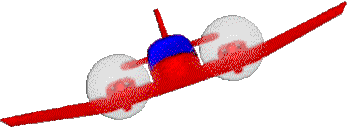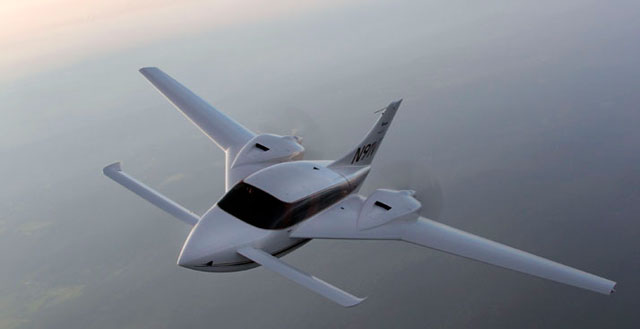Multi engine rating any one
Did any one mention you will need a multi engine rating?
Insurance?
As a multi engine instructor survivor you all touched on the pros and cons and made a few jokes, like the don't worry we have two engines folks, the second engine will get us to the scene of the accident. Gallows humor for sure but its funny because its partly true.
MULTI ENGINE MATH/PERFORMANCE
A light twin typically will lose 80% of its climb performance with the loss of one engine.
To make the math easy for example:
The RV-twin has two 100hp engines and you need 80 hp for straight and level. That means you have 120 hp for climb. Lose one engine you now have 20 hp for climb. Going from 120 to 20 hp is about 83% loss in hp/climb rate.
The two engine climb was say 1200 fpm at 120 mph, gross wt. It is going to be less than a 200hp RV because of the extra weight and increased drag.
Now your twin is single engine, you lose power and have extra drag. Is the prop windmilling? A little twin may not have feathering props? If so than add cost and more weight for the feathering props.
So lets ignore the prop drag, say its zero; Say just on HP lose you have 83% less climb or 1200 x 0.17 = 200 fpm. Your Vse climb speed is a little faster, now 128 mph.
The climb gradient is about 2 sm per minute and 200 feet. So to get to pattern altitude (1000 agl) would take 5 min or 10 miles. WOW that is nap of the earth flying, watch out for the TV antenna. Now to get this 200 fpm, you must fly perfectly, with 3-5 degrees banked into the good engine and had zero side slip. This is all at sea level of course. If at Denver your climb rate would be a negative 200 fpm.
My point is light twin engine planes have two engines because they need them. Light twins do add redundancy and some options if flying at cruise or light, but at gross weight at high density your single engine climb rate may not really give you a takeoff, lose engine and continue option. In fact it almost means you're not going to get far. Of course not all light twins are the same.
Service ceiling for many light twins is only say 5000 ft. That is a 50 fpm climb rate at service ceiling for twins (100 fpm for singles). If you drift down your absolute ceiling may be a little higher, but its not that high. Jets even run into this flying over high parts of the world. They need drift down calculations to fly some routes. Although airline jets have very high single engine altitude capability and takeoff climb is guaranteed for that airport and conditions. Big difference in transport category twins and light twins.
DID YOU KNOW: Light twins need only "demonstrate" a sea level, gross weight "rate of climb" for certification. Well that sounds fine
but that demonstrated rate of climb can be negative. All the regs say is they must document it, it does not have to be positive! Many light twins have marginal SE climb rates. I owned a 160 hp Apache. I flew it solo or with one passenger a lot, with half fuel (it had lots of fuel capacity in 4 tanks). At sea level and light, single engine climb was not too bad. However on a hot day, gross wt, the climb it would be anemic, positive but poor. I never found out. I would NOT want to be in that spot, you know, rock and hard place. They made a 150hp version of the Apache.
I flew a Seneca II, Part 135, that lost power in one engine in cruise. I was able to drift down, fly an approach and land at destination. I was not heavy, the conditions where sea level and weather was MVFR. If it was a single engine plane, I would have no option would I.
However many times the option for a twin engine plane is the same as a single engine plane, pick a place and land. In the Seneca II example, if I was flying over Denver, hot summer day, full gross, I may not have had such a good shot. I would have to hold flaps and gear to the last moment, to hold speed and descent on approach in severe conditions.

Single engine performance assumes clean and feathered. If you can't get the prop feathered all bets are off.
Can you imagine if you where not real current on your multi-procedures, tired and things got stacked against. You where distracted from airspeed control............you get the picture.
The more complex the plane the more is demanded of the pilot. Single engine performance in light twins means the plane is configured, prop feathered, gear up and you are flying zero slip. With one engine you have the rudder deflected towards the good engine, which makes you skid sideways in the opposite direction. To counter that you must bank into the good engine a few degrees (2-5 deg).
Multi engine pilots get into trouble because they get too slow and go under Min Control Speed (Vmc). That is where the asymmetric thrust is greater than the rudders authority and the plane yaws and rolls uncontrollably. The solution is simple lower the nose for more speed (more rudder authority) and/or reduce power on the operating engine (reduce asymmetric thrust the real problem). Of course if this is for real, low to the ground, lowering the nose and/or reducing power means you will hit the ground. At least it will be under control. That is what you practice for the rating (but at altitude). Add flaps, gear, cowl flaps, six levers (mixture, throttle, props), two or 4 boost pumps, 4 mags, 4 tanks, three or four tank selectors and cross feeds, you have a hand full in an emergency. Add IFR to the mix, single pilot and you can see you have to be on your game. I would not recommend a twin for a sport plane. There is the AirCam.
http://www.leza-aircam.com/
Does anyone really want a twin engine sport plane? To remain current and safe would be work. Single engine is fine, just maintain it like your life depeneded on it, because it kind-a does.















